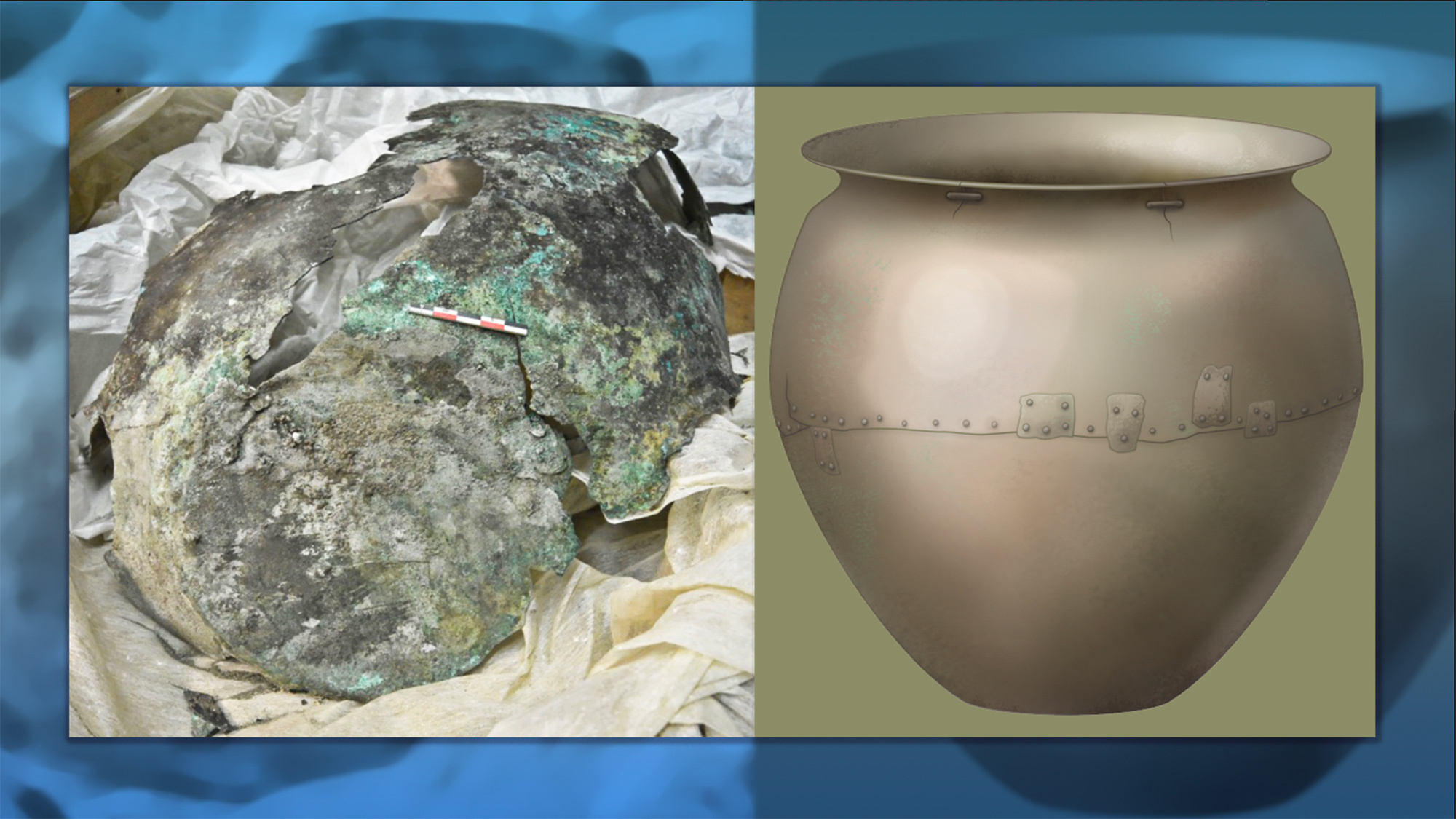

Ancient bones can give scientists crucial information about what human bodies of the past looked like, but finding evidence of what nourished those prehistoric bodies is a bit more challenging. Archeologists typically need to use context clues to draw conclusions on what people used to eat—or get lucky and find some poop.
[Related: Neanderthals caught and cooked crabs 90,000 years ago.]
However, sometimes protein and fat residues can stand the test of time on ancient pottery or in teeth. A study published on August 18 in the journal iScience found that residents of the Caucuses ate sheep, deer, goats, and members of the cow family during the Maykop period (about 3700–2900 BCE) of the Bronze Age. Some millennia old cauldrons from archaeological sites in Eurasia were crucial in deciphering this ancient menu.
“It’s really exciting to get an idea of what people were making in these cauldrons so long ago,” study co-author and University of Zurich biological anthropologist Shevan Wilkin said in a statement. “This is the first evidence we have of preserved proteins of a feast—it’s a big cauldron. They were obviously making large meals, not just for individual families.”
The study combines protein analysis and archaeology to explore the details of what was cooked in ancient cauldrons recovered from burial sites in Eurasia’s Caucasus region. This region lies between the Caspian and Black Seas, and spans Southwestern Russia to Turkey.
“We have already established that people at the time most likely drank a soupy beer, but we did not know what was included on the main menu,” study co-author and Institute for the History of Material Culture archaeologist Viktor Trifonov said in a statement.
Many metal alloys have antimicrobial properties that help preserve proteins on cauldrons. Microbes in the dirt that would normally degrade the proteins left behind on surfaces made of stone or ceramic are stopped on metal alloys.
The team collected eight residue samples from seven metal cauldrons and successfully retrieved proteins from milk, muscle tissue, and blood. The presence of a protein called heat shock protein beta-1 (HSPB-1), indicates that the metal cauldrons were used to cook tissues of deer or bovine animals (cows, yaks, or water buffalo). They also recovered milk proteins from either goats or sheep, so these people likely also prepared dairy.
Using radiocarbon dating, the team believes that the cauldrons could have been used between 3520–3350 BCE.
[Related: Details of life in Bronze Age Mycenae could lie at the bottom of a well.]
The cauldrons show signs of wear and tear from use, but also signs of extensive repair. Taking the time to repair the kitchen tools suggests that they were a valuable object that required skill to make. Such a cooking vessel could be an important symbol of social position or wealth.
“It was a tiny sample of soot from the surface of the cauldron,” said Trifonov. “Maykop bronze cauldrons of the fourth millennium BC[E] are a rare and expensive item, a hereditary symbol belonging to the social elite.”
In future studies, the team would like to explore the differences and similarities between a wider range of vessel types. This could help them get a better idea of what people in the region were doing and how food preparation differed regionally at this time. Cuisine is an important part of culture, so studies like these can help archaeologists better understand the cultural connections between different regions.
“If proteins are preserved on these vessels, there is a good chance they are preserved on a wide range of other prehistoric metal artifacts,” said Wilkin. “We still have a lot to learn, but this opens up the field in a really dramatic way.”
